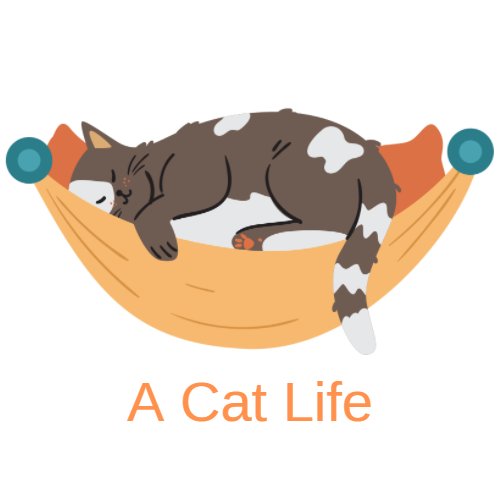
Understanding Cat Behavior
Have you ever wondered what your feline friend is trying to tell you? Cats communicate in many ways, and understanding their behavior can help you build a stronger bond with your pet. Let’s explore some common cat behaviors and their meanings.
- Interpreting Cat Body Language
Cats use their bodies to express their feelings. Here are some common body language signs and what they mean:
| Body Language | Meaning |
|---|---|
| Upright tail | The cat is happy and content. |
| Flattened ears | The cat is scared or angry. |
| Arched back | The cat is feeling threatened. |
| Purring | The cat is relaxed and comfortable. |
- Common Cat Behaviors and Their Meanings
Understanding your cat’s behavior can help you respond to their needs better. Here are some common behaviors and their meanings:
| Behavior | Meaning |
|---|---|
| Kneading | The cat is content and happy. This behavior is often seen when they are relaxed. |
| Scratching | The cat is marking its territory. It’s also a way for them to stretch and keep their claws sharp. |
| Hiding | The cat is scared or anxious. They often hide when they are not feeling well. |
| Bringing you gifts | The cat is showing affection. They often bring their owners small ‘gifts’ like toys or even small animals. |
Remember, every cat is unique. They may display these behaviors differently. The key is to spend time with your cat and learn to understand their unique ways of communication.
Signs of Loneliness in Cats
Just like humans, cats too can experience loneliness. It’s important for cat owners to recognize the signs of loneliness in their feline friends. Here, we will discuss some of the most common behavioral changes that may indicate your cat is feeling lonely.
Cat Behavior Changes
When cats are lonely, they may exhibit a variety of behavioral changes. These changes can be subtle, so it’s important to pay close attention to your cat’s habits and demeanor. Here are some signs to look out for:
- Increased Sleep: Cats are known to sleep a lot, but a lonely cat might sleep even more than usual. If your cat is spending most of its time sleeping, it could be a sign of loneliness. They may be trying to pass the time or escape from their feelings of isolation.
- Over-grooming: Cats are meticulous groomers, but excessive grooming can be a sign of stress or loneliness. Over-grooming can lead to bald patches or sores on your cat’s skin. If you notice your cat grooming excessively, it might be feeling lonely.
- Changes in Appetite: Changes in your cat’s eating habits can also be a sign of loneliness. Some cats may eat less when they’re lonely, while others may eat more. If your cat’s eating habits have changed drastically, it could be a sign that they’re feeling isolated.
Remember, these signs can also be symptoms of other health issues. If you notice any of these changes in your cat’s behavior, it’s important to consult with a veterinarian to rule out any underlying health problems.
Understanding your cat’s behavior is key to ensuring their happiness and well-being. If your cat is showing signs of loneliness, there are steps you can take to help them feel more connected and less isolated.
Cat Depression Signs
Just like humans, cats can also experience feelings of depression. It is important to recognize these signs early on to ensure your feline friend gets the help they need. Here are some of the most common signs of depression in cats:
- Loss of Interest in Play
- Excessive Hiding
- Aggression or Fearfulness
Cats are naturally playful creatures. If you notice that your cat is no longer showing interest in their favorite toys or activities, this could be a sign of depression. They may seem disinterested or lethargic, preferring to sleep or rest rather than engage in play.
While it’s normal for cats to enjoy some alone time, excessive hiding is not. If your cat is spending more time than usual hiding under the bed, in closets, or in other secluded areas, they may be feeling depressed. This behavior is often a cat’s way of withdrawing from the world.
Depression in cats can also manifest as aggression or fearfulness. If your cat is suddenly lashing out or seems overly scared, it could be a sign that they’re not feeling their best. Remember, these behaviors are not your cat being ‘bad’, but rather a cry for help.
It’s important to remember that these signs can also be symptoms of other health issues, so it’s crucial to consult with a veterinarian if you notice any changes in your cat’s behavior. Early detection and treatment can make a big difference in your cat’s health and happiness.
Cat Social Needs
Just like humans, our feline friends also have social needs. They require interaction and communication to lead a healthy and happy life. In this section, we will explore the importance of social interaction for cats and how they communicate with each other.
- The Importance of Social Interaction for Cats
- How Cats Communicate with Each Other
Many people believe that cats are solitary creatures, but this is a common misconception. Cats are social animals and they crave interaction. Social interaction plays a vital role in a cat’s life. It helps them to develop their personality and learn about their environment. It also keeps them mentally stimulated and physically active.
Without adequate social interaction, cats can become lonely and depressed. They may exhibit signs of stress such as excessive grooming, loss of appetite, and changes in behavior. Therefore, it’s important to spend quality time with your cat, play with them, and provide them with plenty of opportunities for social interaction.
Cats communicate with each other in a variety of ways. They use a combination of body language, vocalizations, and scent marking to express their feelings and intentions. For example, a cat may arch its back and puff up its fur when it feels threatened. On the other hand, a cat may purr and rub against another cat to show affection.
Understanding how cats communicate can help you better understand your cat’s needs and behaviors. It can also help you create a more harmonious living environment for multiple cats. Remember, each cat is unique and may have its own way of communicating. So, it’s important to pay attention to your cat’s individual behaviors and signals.
In conclusion, social interaction and communication are essential for a cat’s well-being. As a cat owner, it’s your responsibility to ensure that your cat’s social needs are met. By understanding how cats communicate and providing them with plenty of opportunities for social interaction, you can help your cat lead a happy and healthy life.
Benefits of Multiple Cats
Having more than one cat in your home can offer a multitude of benefits. One of the most significant advantages is the companionship they provide to each other, which can lead to a happier and healthier life for your feline friends.
Companionship
Companionship between cats can be a beautiful thing to witness. They can form strong bonds, providing each other with comfort and company. This companionship can lead to several benefits:
- Reduced Loneliness: Cats, like humans, can feel lonely. Having another cat around can help to alleviate this loneliness. They can keep each other company when you’re not around, reducing feelings of isolation and boredom.
- Increased Play and Exercise: Cats that have a companion often engage in more play and exercise. They can chase each other around the house, play with toys together, and engage in other forms of physical activity. This increased activity can help to keep your cats fit and healthy, reducing the risk of obesity and other health problems.
According to a study by the American Veterinary Medical Association, cats that live in multi-cat households are less likely to exhibit signs of loneliness compared to single-cat households. This is because they have a companion to interact with, which can significantly improve their overall well-being.
For instance, a study published in the Journal of Feline Medicine and Surgery found that cats in multi-cat households were more active and had lower rates of obesity than those in single-cat households. This is likely due to the increased opportunities for play and exercise that come with having a companion.
In conclusion, having multiple cats can offer numerous benefits, particularly when it comes to companionship. Not only can it reduce feelings of loneliness, but it can also lead to increased play and exercise, contributing to a healthier and happier life for your feline friends.
Behavioral Benefits
Having more than one cat in your home can lead to significant behavioral benefits. Let’s explore two of these key benefits in detail:
- Improved Social Skills
- Reduced Behavioral Problems
Cats, like humans, can learn a lot from their peers. When you have multiple cats, they interact with each other, learning important social skills in the process. For instance, they learn how to share space and resources, how to communicate effectively, and how to establish boundaries. These skills can make your cats more well-adjusted and happier overall.
Many behavioral problems in cats, such as aggression or excessive meowing, can be a result of loneliness or boredom. Having another cat around can provide stimulation and companionship, reducing these issues. A study conducted by the American Pet Products Association found that multi-cat households reported fewer behavioral problems than single-cat households. This shows that having more than one cat can lead to a more harmonious home environment.
In conclusion, having multiple cats can lead to significant improvements in their behavior. Not only can they learn important social skills, but they can also exhibit fewer behavioral problems. So, if you’re considering adopting another cat, remember these benefits.
Adopting a Second Cat
Adding a second cat to your family can be a rewarding experience, but it’s important to make the right choice. The key to a successful adoption is finding a cat that will mesh well with your current feline friend.
Choosing the Right Companion
When choosing a second cat, there are two main factors to consider: your current cat’s personality and the potential new cat’s age and energy level.
- Considering your cat’s personality
- Choosing a cat of a compatible age and energy level
Your current cat’s personality plays a big role in how well they will accept a new companion. For example, if your cat is shy and reserved, they might not appreciate a boisterous, playful new friend. On the other hand, if your cat is outgoing and energetic, they might enjoy having a playmate. It’s essential to consider your cat’s personality and choose a second cat that will complement it.
Age and energy level are also important factors when adopting a second cat. Kittens have a lot of energy and may overwhelm an older, more sedate cat. Similarly, a very active cat might be too much for a senior cat to handle. Try to choose a cat that is close in age and energy level to your current cat to ensure a harmonious household.
In conclusion, adopting a second cat requires careful consideration of your current cat’s personality and the potential new cat’s age and energy level. By taking these factors into account, you can increase the chances of a successful adoption and a happy, peaceful home for all.
Introducing a New Cat
Bringing a new cat into your home is an exciting time, but it’s also a time of change for your existing cat. Here are two important steps to make the transition smoother for both cats.
- Gradual Introductions
- Creating a Safe Space for Each Cat
Introducing a new cat to your home should be a gradual process. It’s not a good idea to just put the new cat into the same room with your existing cat and hope they’ll get along. This could lead to fights and stress for both cats.
Instead, start by keeping the new cat in a separate room. Let them get used to the smells and sounds of your home. After a few days, you can start to introduce the cats to each other. Do this by allowing them to sniff each other under a door or through a gate. This way, they can get used to each other’s scent without the risk of a physical confrontation.
Gradually increase the amount of time they spend together, always under supervision. It may take a few weeks, but eventually, they should start to feel comfortable with each other.
Each cat should have their own safe space in your home. This could be a separate room, a cat tree, or even just a specific spot on the couch. This is a place where they can go to relax and feel safe. It’s especially important for the new cat, who may be feeling stressed and anxious in their new environment.
Make sure each cat has their own food and water dishes, litter box, and toys. This can help prevent fights over resources and make both cats feel more secure.
Remember, patience is key when introducing a new cat to your home. It may take time, but with a gradual introduction and a safe space for each cat, you can help ensure a successful transition for everyone.
How to Help a Lonely Cat
Helping a lonely cat is not as difficult as it may seem. With a little bit of time, effort, and understanding, you can make a significant difference in your cat’s life. Here are some strategies that you can employ:
-
Increasing Playtime and Interaction
One of the simplest ways to help a lonely cat is by spending more time with them. Cats are social animals and they crave interaction. Play with your cat regularly, engage them in activities they enjoy, and give them plenty of attention. This not only helps to alleviate their loneliness but also strengthens your bond with them. Remember, quality time is key.
-
Providing Stimulating Toys and Environments
Cats are naturally curious and love to explore. Providing them with a variety of toys and a stimulating environment can help keep them entertained and reduce feelings of loneliness. Consider getting interactive toys that challenge your cat mentally and physically. Also, creating a cat-friendly environment with climbing trees, scratching posts, and cozy hiding spots can make a world of difference.
-
Considering a Feline Companion
If your cat is extremely lonely, you might want to consider adopting a second cat. Having a companion can provide your cat with the social interaction they crave. However, it’s important to remember that not all cats get along, and the introduction process should be done gradually and carefully. Always consider your current cat’s personality and needs before bringing a new cat into the home.
In conclusion, helping a lonely cat involves understanding their needs and providing them with the right kind of stimulation and companionship. With patience and love, you can help your feline friend live a happier, less lonely life.








